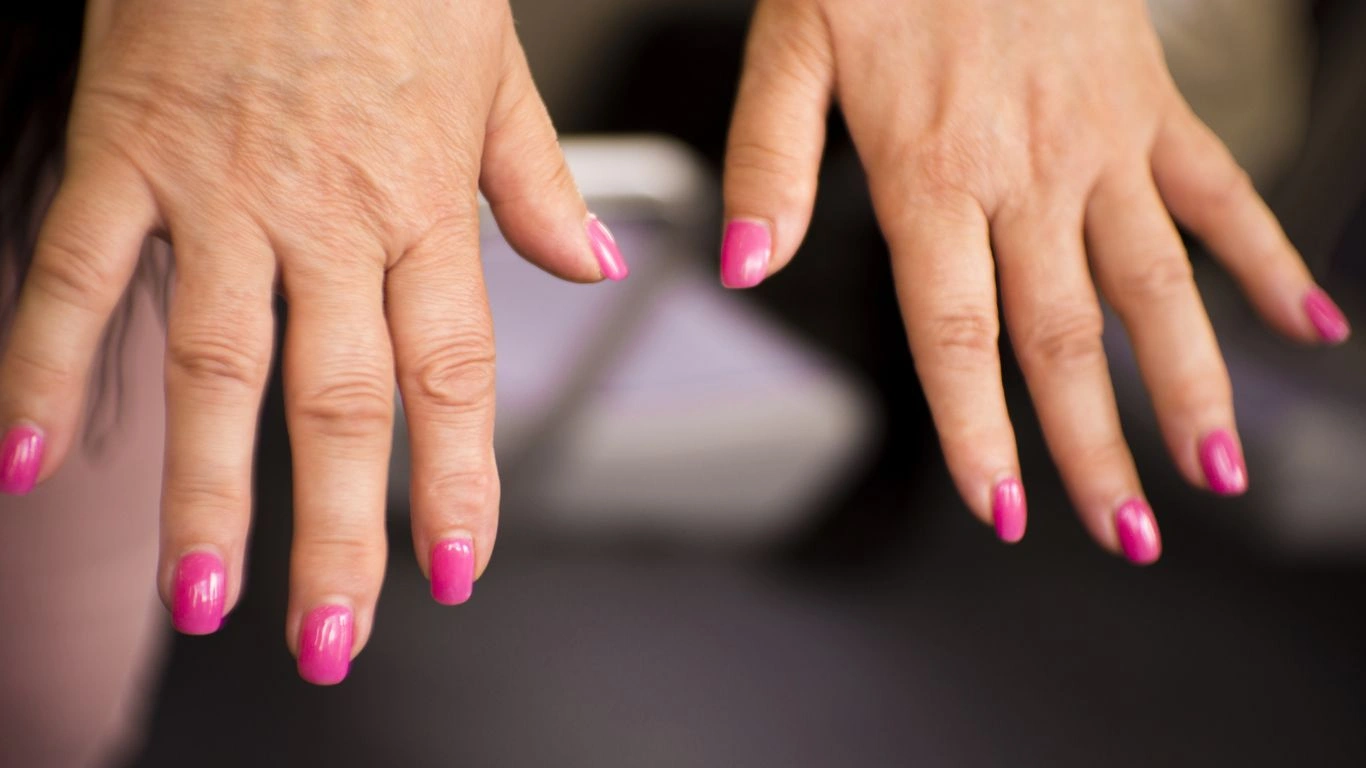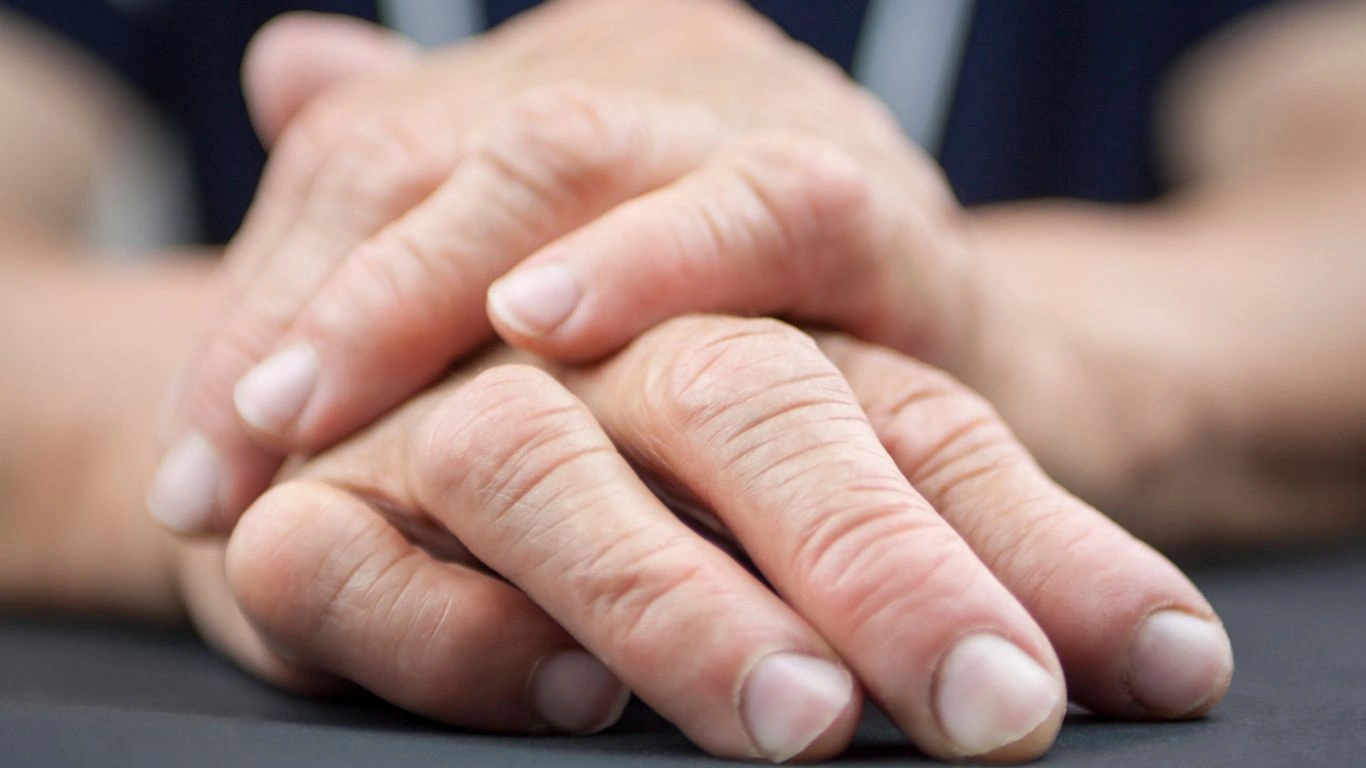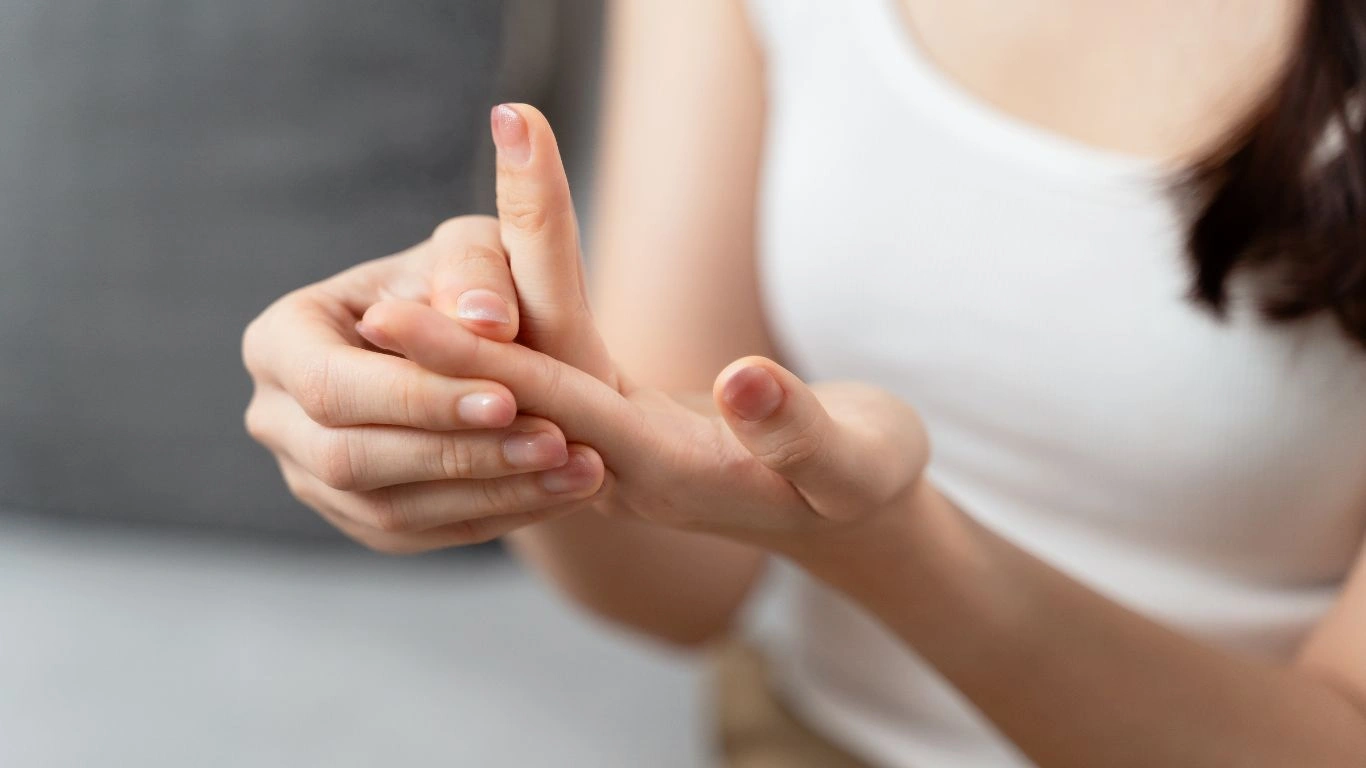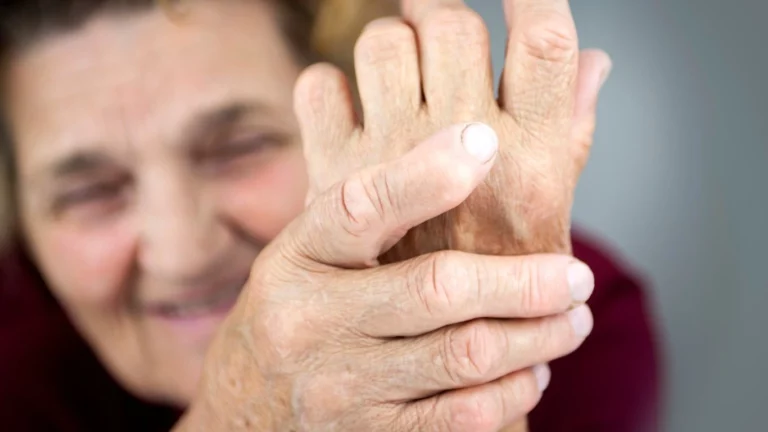Keep Hands Warm with Arthritis: Powerful Tips for Cozy Relief
Let’s be real—if you’ve ever tried typing on a cold morning with arthritic hands, you already know the struggle. As a rheumatology nurse practitioner, I’ve had more conversations than I can count about how to keep hands warm with arthritis. It’s not just about comfort—it’s about protecting your joints, maintaining mobility, and avoiding that deep, aching stiffness that just ruins your day before it even begins. And if you’re like many of my patients (and honestly, like me when my fingers start acting up), you’ve probably tried everything from microwaved rice socks to wearing gloves indoors. So let’s get into the real talk on what actually helps.
Why Cold Weather Hits Different with Arthritis

If you’re living with rheumatoid arthritis or osteoarthritis, you already know cold weather isn’t your best friend. For a lot of folks I treat, the drop in temperature means a serious uptick in joint pain, stiffness, and decreased hand function. It’s not just in your head—cold weather causes blood vessels to constrict, reducing circulation to your extremities. That means less warmth, more stiffness, and more inflammation. Fun times, right?
I remember one of my longtime patients telling me, “Tarra, it’s like my hands go on strike the second the thermometer dips below 50.” And she wasn’t exaggerating. Cold affects joint fluid viscosity and tightens up surrounding muscles and tendons, making everything just feel tighter and more painful. But the good news is—there’s a lot you can do to keep those hands toasty and functional.
Practical Ways to Keep Your Hands Warm with Arthritis

Layer Smart, Not Just Thick
One of the first things I tell my patients is to think in layers—not just with clothes, but with hand protection too. A pair of compression gloves (my personal favorite: the copper-infused kind) can do wonders to reduce swelling and maintain warmth. Add a pair of insulated gloves on top, and suddenly your fingers are living their best life—even in January.
- Base layer: Thin, snug-fitting compression gloves
- Outer layer: Weatherproof gloves or mittens for insulation
- Bonus: Heated gloves if you live somewhere brutally cold
Keep Your Core Warm, Too
Okay, this one might sound weird, but trust me—it works. Your body prioritizes blood flow to vital organs. So if your core is cold, your hands are going to be even colder. A cozy vest or heated jacket can go a long way in helping those fingers stay functional. I wear a heated vest under my scrubs when it’s cold out, and it makes a bigger difference than you’d think.
Moist Heat Is Your Best Friend
I’m a big fan of moist heat for stiff, cold hands. Whether it’s a warm paraffin wax bath (hello, spa day) or a microwavable hand wrap, moist heat penetrates deeper than dry heat and offers longer-lasting relief. I keep a set of gel hand mitts at home, and they’ve become my go-to after a long day at the clinic. Here’s how to do it safely:
- Heat wraps or mitts for no more than 15-20 minutes
- Always test temperature to avoid burns
- Use before hand exercises or stretches for best results
Stay Moving, Even When It’s Cold

It might sound counterintuitive, but movement generates warmth. That doesn’t mean you need to bust out an entire yoga routine (though chair yoga is fabulous for joint health). Just regular gentle hand exercises can stimulate circulation and keep your joints from stiffening up like a rusted hinge.
Simple Hand Exercises I Recommend Daily
- Finger bends (start slow!)
- Thumb touches
- Wrist rolls
- Grip squeezes using a soft therapy ball
Bonus: Do these after using a warm compress and you’ll feel the difference almost instantly.
Make Warmth a Daily Habit
This one’s less about tools and more about consistency. It’s the small things—keeping your gloves by the door, having a heating pad at your desk, doing quick finger stretches when watching TV. My routine has become second nature, and it’s made such a difference in my function and comfort during colder months.
Smart Tools That Actually Help with Arthritic Hands

Let me tell you—when you’ve been working with patients with arthritis as long as I have, you start developing a serious appreciation for the right tools. Whether it’s opening jars, gripping zippers, or just turning a doorknob, cold, stiff hands make everyday stuff feel like a full-blown challenge. That’s where smart, arthritis-friendly tools come in.
In my own routine, I keep a few essentials in easy reach—because sometimes, you just need a shortcut when your hands aren’t cooperating. Here’s a little toolkit I often recommend to patients:
- Electric hand warmers: Rechargeable and portable. Slip them in your coat pocket or keep one at your work desk.
- Ergonomic kitchen gadgets: Jar openers, thick-handled utensils, and electric can openers are game changers.
- Velcro clothing or adaptive zippers: Makes getting dressed a lot less frustrating.
- Silicone grip pads: Great for opening lids or holding onto cold drinkware without slipping.
These might seem small, but when it comes to maintaining independence and comfort, they make a big impact. I had one patient say that getting a battery-heated hand warmer was “like giving my fingers a hug every morning.” And honestly, I agree—it’s that good.
Keep Hands Moisturized for Better Flexibility

This might sound like a skincare tip, but hear me out—keeping your hands moisturized is crucial if you have arthritis, especially in the winter. Dry, cracked skin around the joints can actually make pain worse and limit your range of motion. Plus, cold air just loves to suck the moisture right out of your skin.
I recommend a thick, unscented hand cream—preferably one with shea butter, ceramides, or even a bit of lanolin. Pro tip? Put it on right before bed and then wear a pair of cotton gloves overnight. It’s not glamorous, but it works like magic. I call it my “hand spa” routine, and some of my patients have turned it into a nightly habit too.
Look for These Ingredients:
- Glycerin: Locks in moisture without feeling greasy
- Shea butter: Deeply hydrates and helps soften calloused skin
- Urea or salicylic acid (in low concentrations): Gently exfoliates thickened skin
Plus, the simple act of massaging the cream into your joints adds some circulation-boosting benefits. A tiny warm-up session, if you will.
Warm Drinks, Warm Hands

This one might be more of a cozy life hack than a medical recommendation—but holding a warm mug of tea or coffee can be surprisingly therapeutic. I like to call it “hand therapy disguised as self-care.” The heat from the cup gently warms your palms and fingers, and the act of gripping the mug encourages light mobility and muscle engagement.
So whether it’s herbal tea, a spicy chai, or just some hot lemon water, having a warm drink in your hand is a great low-effort way to stay warm and gently mobile. Just make sure the mug isn’t too hot (I’ve seen a few burns over the years—let’s not do that).
My Go-To Morning Routine for Cold Days:
- Start with a warm drink (bonus points if it’s anti-inflammatory like turmeric tea)
- Do a few light hand stretches while sipping
- Apply hand cream while hands are still warm
- Put on compression gloves while getting ready
This simple combo sets the tone for the rest of the day—and helps reduce that awful “stuck” feeling when you first wake up with stiff hands.
Hydration Matters More Than You Think
Staying hydrated may not seem directly related to arthritis, but you’d be surprised how many of my patients notice a difference when they’re drinking enough water. Dehydration can make joint tissue more brittle and stiff, and it definitely doesn’t help circulation—which is already compromised in arthritic hands, especially in the cold.
I always suggest aiming for at least 64 ounces a day, and more if you’re active or on medications that can cause water loss. If plain water doesn’t do it for you, try adding cucumber slices, mint, or a splash of juice. And remember: warm water or herbal teas count, too!
Extra Tips for Hydrating Right:
- Keep a water bottle in your line of sight at work or home
- Set reminders if you tend to forget to drink (I use my smartwatch)
- Eat water-rich foods like cucumbers, citrus fruits, and soups
Little habits like these might not seem like a big deal, but they stack up—especially when you’re working to manage something as persistent as arthritis. And trust me, your hands will thank you for it.
Supportive Therapies to Keep Hands Functioning and Warm

So far, we’ve covered lifestyle hacks and tools, but sometimes you need a little extra help to keep those joints happy—especially when cold weather makes everything feel like it’s working against you. That’s where physical and occupational therapy come in. If you’re serious about learning how to keep hands warm with arthritis while also preserving strength and range of motion, working with a professional can be a game changer.
As someone who works closely with OTs and PTs, I can’t overstate the difference their expertise makes. They’ll help tailor hand exercises to your specific arthritis type—whether that’s rheumatoid, psoriatic, or good ol’ osteoarthritis. I’ve seen patients regain grip strength, improve dexterity, and even reduce their need for NSAIDs just from consistent therapy alone.
Therapist-Approved Warmth Strategies
- Contrast baths: Alternating warm and cool water to boost circulation (yes, it works!)
- Ultrasound therapy: Delivers deep heat to tissues—ask your PT about this
- Task-specific hand exercises: Think buttoning practice, gentle resistance work, and tool use
Plus, therapists often know all the latest gadgets and braces that can support your hands without making them feel like they’re in a straightjacket. If you’re not already connected with one, ask your rheumatologist for a referral. It’s one of the best proactive steps you can take.
When Medication and Supplements Make a Difference

We can’t talk about keeping hands warm and flexible without addressing what’s happening *inside* the body too. Inflammation plays a huge role in how cold affects arthritic joints. When inflammation is flaring, circulation decreases, tissues stiffen, and pain spikes—it’s a domino effect. That’s why it’s important to have your medication regimen dialed in with your rheumatologist.
Personally, I’ve seen patients feel like entirely different people once their DMARDs (disease-modifying anti-rheumatic drugs) kicked in. It doesn’t always happen overnight, but once inflammation gets under control, the difference in warmth and movement can be surprisingly noticeable.
Medications and Supplements Worth Discussing:
- DMARDs: Methotrexate, leflunomide, sulfasalazine—these slow disease progression
- Biologics: Target specific immune pathways (like TNF inhibitors) for inflammatory arthritis
- Fish oil: Omega-3s may help reduce joint tenderness and morning stiffness
- Turmeric (curcumin): Anti-inflammatory, but talk to your provider before starting
Of course, always check with your healthcare team before starting anything new—even if it’s “natural.” Just because it’s over-the-counter doesn’t mean it’s risk-free, especially if you’re already on other meds.
Make Your Environment Work for You
This one often gets overlooked, but it matters—a lot. Your environment can either help you stay warm and mobile or sabotage your progress. Think about the places you spend the most time. Are they drafty? Are you constantly reaching for cold door handles or touching icy steering wheels?
I always tell my patients to “arthritis-proof” their surroundings. Even small upgrades can help preserve joint health while keeping your hands cozy.
Easy Environmental Fixes:
- Install lever-style door handles instead of knobs (way easier on joints)
- Keep warm mittens or gloves in your car for chilly steering wheels
- Use heated keyboard pads or mouse rests if you work on a computer
- Layer your bedding so hands stay warm overnight (especially if you tend to wake up stiff)
I even had one patient line her winter coat pockets with fleece and stash hand warmers inside. Sounds minor, but she told me it kept her fingers from locking up during her morning commute. That’s the kind of practical thinking we love around here.
Wrapping It All Together: Lifestyle, Care, and Consistency
At the end of the day, keeping hands warm with arthritis isn’t about finding a single “miracle fix.” It’s a combo of habits, smart tools, personalized care, and listening to your body. There’s no one-size-fits-all, but there’s always something that works—you just have to find your mix.
From my side of the clinic table, I’ve seen firsthand how small, thoughtful changes can bring big relief. And as someone who’s dealt with cold-triggered hand stiffness myself, I can tell you—it’s absolutely worth the effort to build that personalized routine.
Stay consistent, stay warm, and don’t be afraid to advocate for your own comfort. Your hands do a lot for you. It’s time to return the favor.
Helpful References:
Disclaimer:
This article is for informational purposes only and is not a substitute for professional medical advice, diagnosis, or treatment. Always consult your healthcare provider before making any changes to your care plan.

Tarra Nugroho is a dedicated Nurse Practitioner with a strong foundation in family and preventive care. She brings both compassion and clinical expertise to her practice, focusing on patient-centered care and health education. As a contributor to Healthusias.com, Tarra translates medical knowledge into clear, empowering articles on topics like women’s health, chronic disease management, and lifestyle medicine. Her mission is simple: help people feel seen, heard, and informed—both in the clinic and through the content she creates. When she’s not caring for patients, Tarra enjoys weekend hikes, plant-based cooking, and curling up with a good health podcast.






